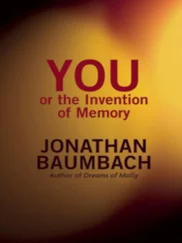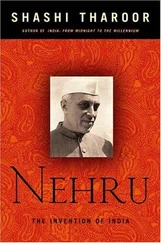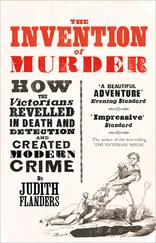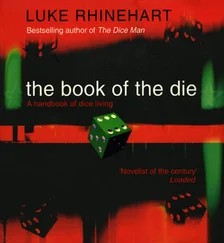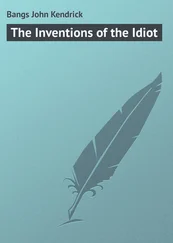1 ...8 9 10 12 13 14 ...17 Figure 1 Cover of Time Magazine in the wake of the “Harlem blackout riot” of August 1977
That animal is the urban “underclass,” a term with woolly contours and sulfurous connotations (see box “A nebulous term” on pp. 31–2) that is best kept in quotation marks since it refers to a sociosymbolic constellation peculiar to the United States of the two decades following the New York City blackout riots of July 1977 that prompted Time Magazine to devote its cover to this fearsome “minority within a minority” (see figure 1). As we shall see, it has no real precedent in American history due to the triple stigma of class, caste, and place it carries and no counterpart in Western European countries owing to the deep differences in the manner in which these two continents conceive urban marginality and treat it politically. 2
Indeed, the “underclass” is neither the “subproletariat” of Marxist theory (for the term itself is misleading on that count; it is not a class), nor the “fourth-world” of the sociology of poverty inspired by reformist Catholicism (it is the object of scorn and terror rather than compassion), nor the “new poor” or the “excluded” figuring prominently in the contemporaneous European debates on urban inequality (the first term was briefly in fashion at the start of the 1960s, the second is largely absent from the American vocabulary on the topic). 3It is a diffuse and motley aggregate – “a mishmash of social misfits,” concludes sociologist Carole Marks upon conducting a broad-ranging survey of extant scholarly studies on the question 4– composed of fundamentally incongruous categories that owe being lumped together thus to the simple fact that they are perceived as a menace , at once physical, moral, and fiscal, for the integrity of urban society.
A nebulous term with “evil” connotations
“The term is powerful because it calls attention to the conjunction between the characters of individuals and the impersonal forces of the larger social and political order. ‘Class’ is the least interesting half of the word. Although it implies a relationship between one social group and another, the terms of that relationship are left undefined until combined with the familiar word ‘under’. This transformation of a preposition into an adjective has none of the sturdiness of ‘working’, the banality of ‘middle’, or the remoteness of ‘upper’. Instead, ‘under’ suggests the lowly, passive, and submissive, yet at the same time the disreputable, dangerous, disruptive, dark, evil, and even hellish. Apart from these personal attributes, it suggests subjection, subordination, and deprivation. All these meanings are perhaps best brought together in Richard Wagner’s The Ring of the Nibelung . Wotan goes under the earth to wrest the ring from the malicious Alberich, who had used it to enslave a vile and debased subhuman population.”
Paul Peterson, Henry Shattuck Professor of Government at Harvard University and Chair of the Committee for Research on the Urban Underclass at the Social Science Research Council, reporting approvingly the findings of a major conference on the topic (in Jencks and Peterson,
The Urban Underclass , 1991, p. 3).
1 1. It would take a booklet to simply list all the print articles, television reports, and academic publications devoted to the “underclass” during the two decades covered here (1977–1997). A quick tour giving the reader an idea of the intensity and diversity of concerns covered by this umbrella term in journalism includes Ken Auletta, The Underclass (1982); Chicago Tribune, The American Millstone: An Examination of the Nation’s Permanent Underclass (1986); Myron Magnet, The Dream and the Nightmare: The Sixties Legacy to the Underclass (1993); and Peter Davis, If You Came This Way: A Journey Through the Lives of the Underclass (1995). A panel of scholarly views is Christopher Jencks and Paul E. Peterson (eds.), The Urban Underclass (1991); William Julius Wilson (ed.), The Ghetto Underclass: Social Science Perspectives (1993a); Michael B. Katz (ed.), The “Underclass” Debate: Views from History (1993a); and William A. Kelso, Poverty and the Underclass: Changing Perceptions of the Poor in America (1994). The tortuous interface between academic, journalistic, and policy views is captured live in Joint Economic Committee, The Underclass, Hearing Before the Joint Economic Committee of the 101st Congress of the United States (1989), which I dissect in chapter 2.
2 2. Alberto Alesina and Edward L. Glaeser, Fighting Poverty in the US and Europe: A World of Difference (2004), and Jonas Pontusson, Inequality and Prosperity: Social Europe vs. Liberal America (2005).
3 3. On the “subproletariat,” see Pierre Bourdieu, Algérie 1960. Structures économiques et structures temporelles (1977); the concept of “quart-monde” is elaborated by Jean Labbens, Le Quart-monde. La condition sous-prolétarienne (1969), and idem, Sociologie de la pauvreté. Le tiers-monde et le quart-monde (1978). The parallel rising popularity of “exclusion” in Europe is attested by Graham Room (ed.), Beyond the Threshold: The Measurement and Analysis of Social Exclusion (1995), and Serge Paugam, (ed.), L’Exclusion. L’état des savoirs (1996).
4 4. Carole Marks, “The Urban Underclass” (1991), p. 462.
1 Between concept and myth: Genealogy of a shifty category
Described alternatively as a “ferocious subculture,” a “hotbed of deviance,” and a “tangle of pathology,” or as a “contagion of disorder” and a “nation apart” on the verge of forming “permanent enclaves of poverty and violence” (so many expressions that one finds indiscriminately under the pen of journalists and in leading scholarly publications), the “underclass” does not encompass all the poor, nor even the most marginal of those dwelling at the urban margins. In keeping with the Victorian distinction between the virtuous and the vicious poor inherited from the nineteenth century, 1it came to designate the “undeserving” and threatening black poor from the dilapidated remnants of the historic Bronzeville . By dint of their “antisocial” behaviors, “dysfunctional” lifestyle, and “deviant” values, those destitute African Americans trapped in the hyperghetto would be responsible for their own piteous fate as for the decline of the metropolis, which they saddle with a string of “social dislocations” that seem consubstantial to them: persistent joblessness and long-term reliance on public aid, marital dissolution and sexual anomie, educational failure and cultural deviation, drug trafficking and consumption, street delinquency and violent criminality, topped off by repeat incarceration.
Dangerousness and immorality in the city, along with membership in a stigmatized ethnoracial category (African Americans and, for some authors, Puerto Ricans), are the distinctive characteristics that motivate the authoritative (nay authoritarian) allocation to this “group” of the poor, whose emergence would explain the continued deterioration of the “ghettos” of the American metropolis. But we shall see that this collective exists as such only on paper , or in the minds of those who invoke it to spotlight a population they find violates their sense of sociosymbolic propriety.
A statistical artefact born of the arbitrary lumping of populations pertaining to disparate social relationships and mechanisms – ethnicity, the labor market, the family, geography, and state action on the social and penal fronts – the “underclass” is a lurid location in symbolic, social and physical space, a reviled and shunned entity perceived from afar (and above) and upon which each can project his racial and class fantasies. 2Rather than a sociological category serving knowledge production, it is a social categoreme (from the Greek katégoreisthai ): an instrument of “public accusation.” 3The “underclass” thus enters into the sociology of urban marginality not as an analytic tool but as an object of study: a collective belief (or rhetorical mirage) to be elucidated, a confused yet consequential classification that impacts urban reality by twisting its collective representation, a trope of incrimination that reveals more about those who deploy it than about those whom it ostensibly designates.
Читать дальше

